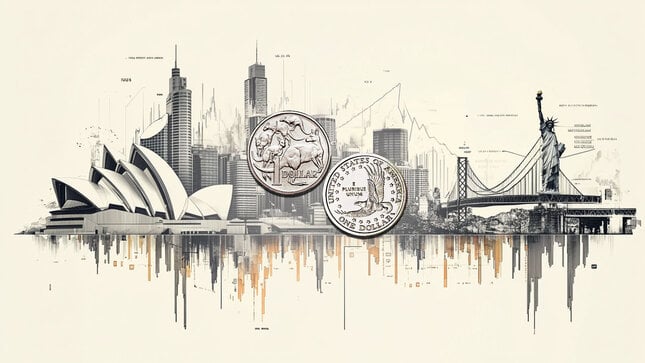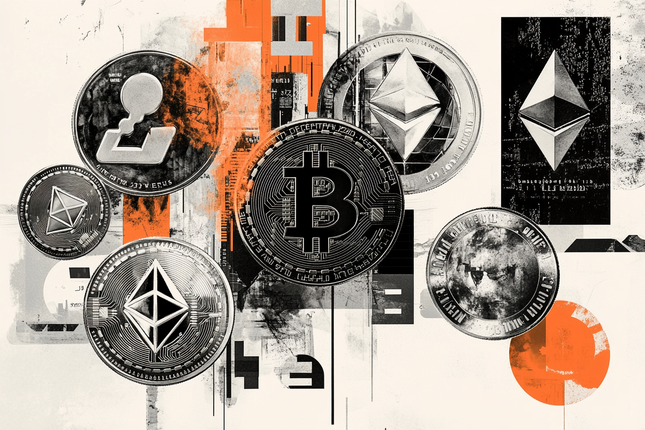- USD/JPY slumps to near 148.40 as traders have become increasingly confident that the Fed could cut interest rates in the June meeting.
- US President Trump confirmed 25% tariffs on Canada and Mexico and 10% on China.
- The BoJ is expected to raise interest rates further this year.
The USD/JPY pair posts a fresh almost five-month low near 148.40 in North American trading hours on Tuesday. The asset slumps as the US Dollar (USD) weakens amid escalating Federal Reserve (Fed) dovish bets. The US Dollar Index (DXY), which tracks the Greenback’s value against six major currencies, slumps to near 106.00, the lowest level seen in almost three months.
US Dollar PRICE Today
The table below shows the percentage change of US Dollar (USD) against listed major currencies today. US Dollar was the strongest against the Australian Dollar.
| USD | EUR | GBP | JPY | CAD | AUD | NZD | CHF | |
|---|---|---|---|---|---|---|---|---|
| USD | -0.58% | -0.21% | -0.67% | -0.43% | -0.10% | -0.29% | -0.81% | |
| EUR | 0.58% | 0.38% | -0.06% | 0.16% | 0.48% | 0.30% | -0.26% | |
| GBP | 0.21% | -0.38% | -0.43% | -0.22% | 0.11% | -0.07% | -0.62% | |
| JPY | 0.67% | 0.06% | 0.43% | 0.22% | 0.55% | 0.36% | -0.18% | |
| CAD | 0.43% | -0.16% | 0.22% | -0.22% | 0.33% | 0.15% | -0.41% | |
| AUD | 0.10% | -0.48% | -0.11% | -0.55% | -0.33% | -0.17% | -0.74% | |
| NZD | 0.29% | -0.30% | 0.07% | -0.36% | -0.15% | 0.17% | -0.55% | |
| CHF | 0.81% | 0.26% | 0.62% | 0.18% | 0.41% | 0.74% | 0.55% |
The heat map shows percentage changes of major currencies against each other. The base currency is picked from the left column, while the quote currency is picked from the top row. For example, if you pick the US Dollar from the left column and move along the horizontal line to the Japanese Yen, the percentage change displayed in the box will represent USD (base)/JPY (quote).
Traders have raised bets supporting the Fed to resume the policy-easing cycle from the June meeting due to an array of weak US economic data. According to the CME FedWatch tool, the probability for the central bank to cut interest rates in June has increased to 86% from 71% recorded a week ago.
Meanwhile, an additional 10% tariffs from US President Donald Trump on China and 25% on Canada and Mexico have failed to improve the safe-haven appeal of the US Dollar. Trump imposed an additional 10% levy on China for pouring drugs into the US economy. In retaliation, China has also announced tariffs on significant agriculture imports. This has resulted in a trade war between the world’s biggest nations, which has weighed on US indices.
On Monday, the S&P 500 slumped over 2% after Trump confirmed tariffs on his North American peers and China. Over weakness in the Wall Street, US Treasury Secretary Scott Bessent said that the focus of the government is majorly on strengthening small businesses. “Wall Street’s done great, Wall Street can continue to do fine, but we have a focus on small business and consumers,” Bessent said on Fox News’s Fox & Friends on Tuesday, Bloomberg reported.
In the Asia-Pacific region, the Japanese Yen (JPY) performs strongly on mounting expectations that the Bank of Japan (BoJ) will raise interest rates again this year.
Net long positions in yen futures among non-commercial traders - such as hedge funds and other speculators - soared to 96K contracts in the week ending February 25. That was up from 61K a week earlier, data from the U.S. Commodity Futures Trading Commission showed on Friday and was a record on data stretching back more than 30 years, Reuters report.
US Dollar FAQs
The US Dollar (USD) is the official currency of the United States of America, and the ‘de facto’ currency of a significant number of other countries where it is found in circulation alongside local notes. It is the most heavily traded currency in the world, accounting for over 88% of all global foreign exchange turnover, or an average of $6.6 trillion in transactions per day, according to data from 2022. Following the second world war, the USD took over from the British Pound as the world’s reserve currency. For most of its history, the US Dollar was backed by Gold, until the Bretton Woods Agreement in 1971 when the Gold Standard went away.
The most important single factor impacting on the value of the US Dollar is monetary policy, which is shaped by the Federal Reserve (Fed). The Fed has two mandates: to achieve price stability (control inflation) and foster full employment. Its primary tool to achieve these two goals is by adjusting interest rates. When prices are rising too quickly and inflation is above the Fed’s 2% target, the Fed will raise rates, which helps the USD value. When inflation falls below 2% or the Unemployment Rate is too high, the Fed may lower interest rates, which weighs on the Greenback.
In extreme situations, the Federal Reserve can also print more Dollars and enact quantitative easing (QE). QE is the process by which the Fed substantially increases the flow of credit in a stuck financial system. It is a non-standard policy measure used when credit has dried up because banks will not lend to each other (out of the fear of counterparty default). It is a last resort when simply lowering interest rates is unlikely to achieve the necessary result. It was the Fed’s weapon of choice to combat the credit crunch that occurred during the Great Financial Crisis in 2008. It involves the Fed printing more Dollars and using them to buy US government bonds predominantly from financial institutions. QE usually leads to a weaker US Dollar.
Quantitative tightening (QT) is the reverse process whereby the Federal Reserve stops buying bonds from financial institutions and does not reinvest the principal from the bonds it holds maturing in new purchases. It is usually positive for the US Dollar.
Information on these pages contains forward-looking statements that involve risks and uncertainties. Markets and instruments profiled on this page are for informational purposes only and should not in any way come across as a recommendation to buy or sell in these assets. You should do your own thorough research before making any investment decisions. FXStreet does not in any way guarantee that this information is free from mistakes, errors, or material misstatements. It also does not guarantee that this information is of a timely nature. Investing in Open Markets involves a great deal of risk, including the loss of all or a portion of your investment, as well as emotional distress. All risks, losses and costs associated with investing, including total loss of principal, are your responsibility. The views and opinions expressed in this article are those of the authors and do not necessarily reflect the official policy or position of FXStreet nor its advertisers. The author will not be held responsible for information that is found at the end of links posted on this page.
If not otherwise explicitly mentioned in the body of the article, at the time of writing, the author has no position in any stock mentioned in this article and no business relationship with any company mentioned. The author has not received compensation for writing this article, other than from FXStreet.
FXStreet and the author do not provide personalized recommendations. The author makes no representations as to the accuracy, completeness, or suitability of this information. FXStreet and the author will not be liable for any errors, omissions or any losses, injuries or damages arising from this information and its display or use. Errors and omissions excepted.
The author and FXStreet are not registered investment advisors and nothing in this article is intended to be investment advice.
Recommended content
Editors’ Picks

AUD/USD: Momentum favours further gains
In line with the broad recovery in the risk-linked complex, AUD/USD left behind a two-day negative streak and resumed its uptrend towards the 0.6400 region, always on the back of the resurgence of quite a strong downside pressure hitting the US Dollar on Thursday.

EUR/USD: Extra advances appear in the pipeline
EUR/USD followed the widespread improved sentiment in the risk-linked galaxy and managed to set aside two daily drops in a row and refocus on the upper end of its recent range around the 1.1400 zone on Thursday.

Gold price climbs past $3,300 on uncertainty about trade and weak USD
Gold snaps two-day losing streak, gaining 1.5% on fresh trade war fears. Trump softens tariff talk, but China denies negotiations and demands full rollback. Fed rate cut bets rise as yields drop and economic uncertainty builds.

Ondo Finance hits $3B market cap as CEO Nathan Allman meets SEC to discuss tokenized US securities
Ondo Finance met with officials of the SEC and the law firm Davis Polk to discuss the regulation of tokenized US securities. Topics included registration requirements, broker-dealer rules and proposed compliant models for tokenized securities issuance.

Five fundamentals for the week: Traders confront the trade war, important surveys, key Fed speech Premium
Will the US strike a trade deal with Japan? That would be positive progress. However, recent developments are not that positive, and there's only one certainty: headlines will dominate markets. Fresh US economic data is also of interest.

The Best brokers to trade EUR/USD
SPONSORED Discover the top brokers for trading EUR/USD in 2025. Our list features brokers with competitive spreads, fast execution, and powerful platforms. Whether you're a beginner or an expert, find the right partner to navigate the dynamic Forex market.



